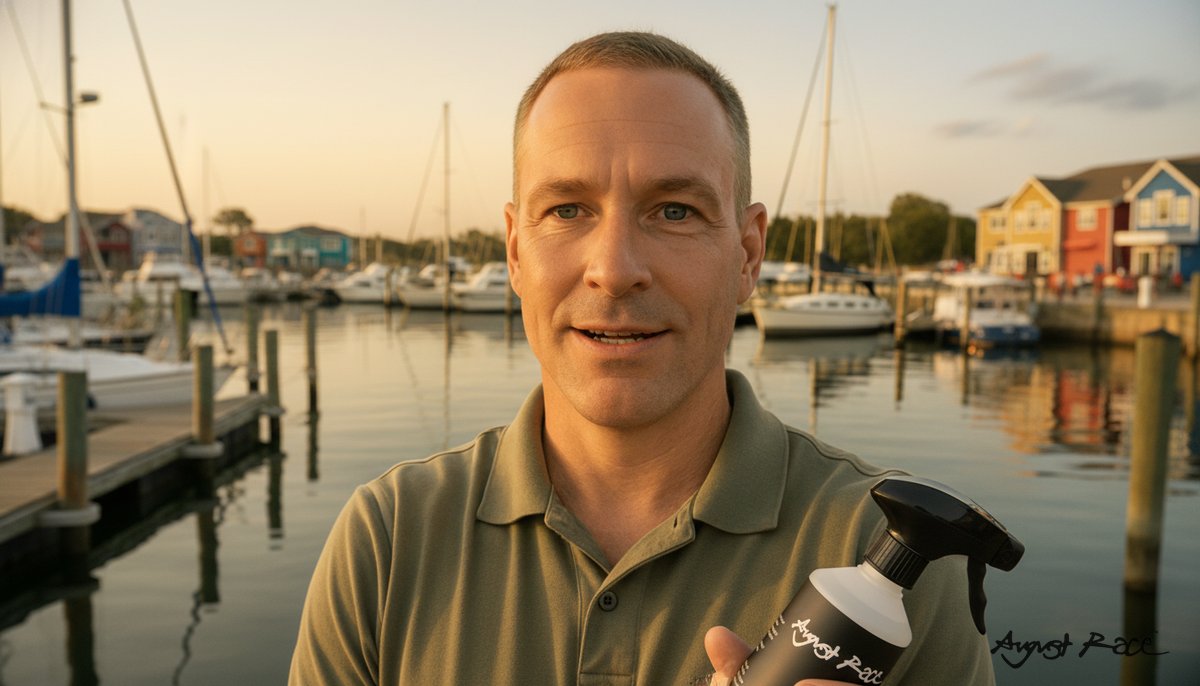August Race Fender Clean: The Professional Boat Fender Cleaner for Busy Marinas
A morning at the marina: why fender care matters to our operations
By 0700 our dock team is already walking the berths, noting arrivals and turnarounds. The first impression for our visiting yachts is often their fenders -- dull, salt-streaked, and marked by diesel sheen from yesterday’s traffic. When fenders look tired, guests assume the same about our standards. That’s why we treat the right boat fender cleaner as part of our front-of-house presentation.
Dirty fenders slow everything down. Extra scrubbing adds minutes to each berth, crews break rhythm, and small cosmetic issues balloon into complaints or even damage claims. In a facility like ours, fender care is both a visual standard and an operational KPI: it affects berth presentation, turnaround time, and safety on the pontoons.
A purpose-built, scalable marine fender restorer eliminates guesswork, speeds cleaning, and preserves the appearance of our docks. The right product frees our teams to focus on guest service and vessel movement -- not battling salt and grime. That’s the lens we use to evaluate solutions like August Race Fender Clean for daily workflows.
Common challenges we face cleaning fenders across dozens of boats
Across a busy tide, our crews see the same contaminants over and over: baked-on salt, diesel residue, algae streaks, ferry soot, rubber transfers, and embedded grime from high-footfall finger piers. Tackling salt removal fenders becomes a constant battle when the breeze dries spray onto vinyl and PVC.
Operationally, we work under tight windows between arrivals and departures. Staffing skill levels vary by shift, and rinse stations can bottleneck during peak hours. We need a clear, repeatable answer to how to remove grime from fenders without tying up a hose or a senior hand.
Material compatibility matters too. We encounter PVC, foam-filled, and vinyl fenders daily. These surfaces need restoration without bleaching, softening, or leaving a slick residue that creates slip hazards. And we’re under budget and environmental pressure to avoid harsh solvents while still delivering fast, consistent results.
These constraints set the bar for any solution: effective on the worst marina soilage, forgiving on materials, efficient for crews, and compliant for our waters.
What to look for in a professional-grade boat fender cleaner
- Eco considerations: If your facility prioritizes an eco-friendly fender cleaner or a non-toxic fender cleaner, confirm the product’s Safety Data Sheet (SDS), biodegradability claims, and local runoff compliance. Our crews work hands-on all day; low hazard profiles and low odor support safe, repeatable use.
- Formulation priorities: Look for strong action on salt crusts and oily residues, along with compatibility across common fender materials. A product that grips vertical surfaces briefly -- without a long dwell -- helps move more boats through.
- Practical design: Concentrated formulas stretch budgets, reduce storage, and simplify supply. Clear dilution guidance supports mixed skill levels. Simple dispensing (trigger sprayers for detail work, pump-up sprayers for scale) keeps teams moving.
- Throughput and ergonomics: Fast contact times, easy rinse-off, and minimal rework are the multipliers that free our rinse stations. Packaging that crews can lift, carry, and dose without spills reduces fatigue and keeps the docks tidy.
With these criteria in mind, we’ve integrated August Race Fender Clean into our SOPs as a professional boat fender cleaner that fits busy-marina realities. Always review the product label and SDS to align with your local regulations and material mix.
August Race Fender Clean: how it performs in a high-traffic marina
Here’s the workflow our crews follow when we deep clean marine fenders using August Race Fender Clean during turnarounds and scheduled cycles.
- Pre-rinse and sort
- Lightly rinse to cool surfaces and shed loose salt.
- Triage fenders: light film, medium grime, or heavy staining. This helps assign contact time and brush grade.
- Apply and agitate
- Apply solution per the label. For speed, we batch-mix in labeled sprayers at the start of shift.
- For light film, a microfiber or soft brush is usually enough. For embedded grime, use a medium bristle and circular passes along seams and scuffs.
- Rinse and inspect
- Rinse from top to bottom to avoid streaking.
- Spot-check for residual diesel film or tide marks. Reapply only where needed to avoid overuse.
- Final wipe and stage
- Quick wipe to remove water spots on high-visibility berths.
- Stage fenders uniformly for consistent presentation.
Operational impact we notice
- Throughput: Concentrated dosing and fast action help shorten dwell and reduce rework, saving labor minutes per berth.
- Material appearance: Crews report clean, bright vinyl/PVC without the chalking or bleaching we’ve seen with aggressive solvents.
- Compatibility: Works with onboard washdowns or marina hose stations; the process doesn’t require specialized equipment, so we can deploy it across teams quickly.
Scaling tips for teams
- Batch prep: Mix labeled sprayers at the start of each shift. Park them at rinse points to cut walking time.
- Two-person rhythm: One applies and agitates while the other rinses and stages; swap roles every few berths to avoid fatigue.
- Schedule by tide: Reserve heavy cleans for slack water and quieter piers. Rotate “deep clean” cycles weekly so no berth falls behind.
Always follow the product label. Spot-test on a low-visibility area, especially on older or colored fenders, and confirm compatibility with supplier guidance before large-scale use.
Proof from the dock: results, testimonials, and operational metrics
We track outcomes, not anecdotes. When evaluating the best cleaner for boat fenders, we recommend measuring:
- Time per fender: baseline vs. after adoption.
- Rework rate: percentage of fenders that need a second pass.
- Chemical usage per berth: concentrate-to-water ratios and cost per day.
- Berth presentation scores: short checklists our supervisors use during rounds.
What our team members say
- Head dockhand: “The trigger-and-rinse routine is consistent. It’s quick to spot-clean between arrivals without tying up the rinse station.”
- Operations manager: “Standardizing dilution and contact time made the results repeatable across shifts. Less variability means fewer callbacks.”
- Visiting yacht captain: “Fenders looked clean on arrival -- no greasy film rubbing onto our topsides.”
Durability and care
- We prefer gentle, repeatable cleaning over aggressive stripping. Our fenders retain color and texture better when we avoid harsh solvents and stick to steady monthly maintenance.
Addressing common objections
- Cost vs. labor: Concentrates can look pricier per liter; measured against saved minutes and lower rework, total cost often trends down. Track it for a month to see the pattern.
- Staff safety: Choose products with clear handling guidance and low odor; reinforce PPE and rinse protocols.
- Compliance: Confirm local runoff rules and keep SDS on hand; use catch mats or rinse in designated zones where required.
Results will vary by marina, staffing, and soilage mix. The key is consistent process and measurement.
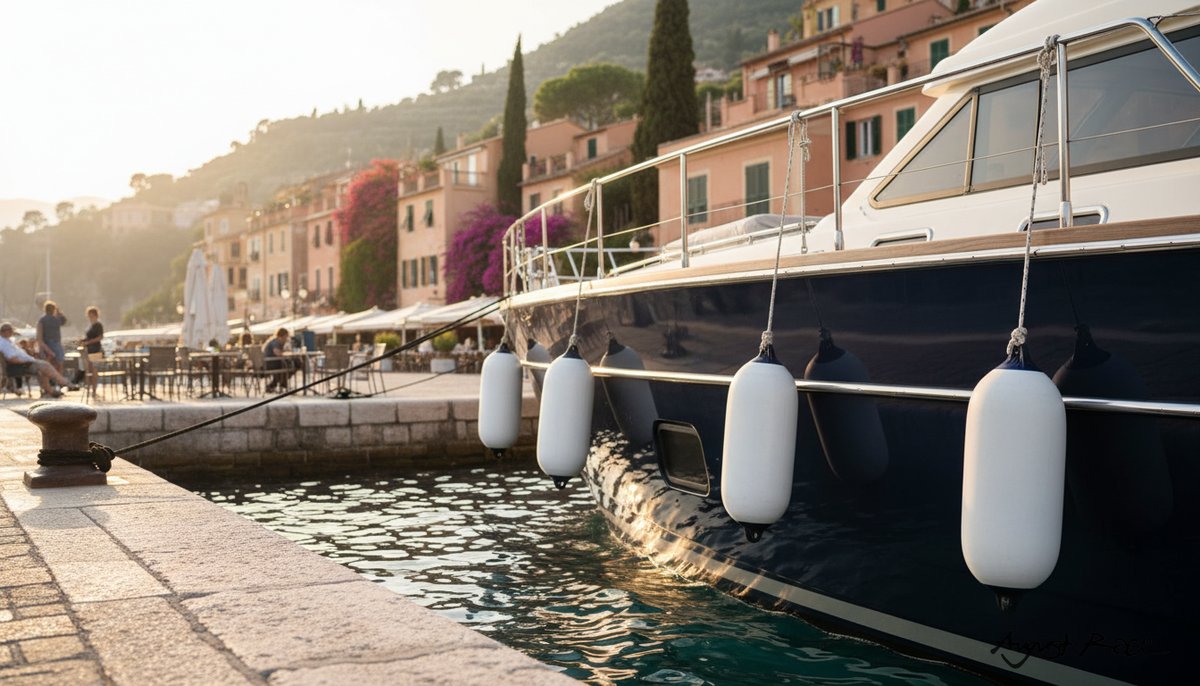
Implementing Fender Clean across your marina: a rollout checklist
A pragmatic rollout ensures consistency and buy-in across crews.
Phased plan
- Pilot: Choose 2–3 piers with varied traffic. Set KPIs (time per fender, rework rate, cost per berth, presentation score).
- Train: Run a 20-minute toolbox talk on safety, dilution, contact time, and brushes. Post a one-sheet SOP at rinse stations.
- Review: After two weeks, assess KPIs and adjust dilution or brushes.
- Scale: Extend to all slips; add periodic deep-clean cycles to the weekly schedule.
Crew training points
- Read the label and SDS. Confirm any eco or non-toxic claims and your local requirements.
- Dilution: Pre-mix in labeled bottles. Calibrate measuring cups to avoid “heavy-handed” dosing.
- Contact time: Let chemistry work -- don’t over-scrub. Keep it moving to protect surfaces and wrists.
- Material checks: Spot-test older, colored, or foam-filled units.
Equipment and supplies
- Dilution station or measuring cups; color-coded, labeled sprayers.
- Soft and medium brushes; microfibers for final wipes.
- Hoses with pressure-limiting nozzles to reduce splash and runoff.
- PPE: gloves/eye protection as per SDS.
Inventory guidance
- Forecast from pilot usage. Maintain a two-week buffer in a cool, safe storage area.
- Reorder thresholds: set min/max levels; assign a dock lead to check stock each Friday.
A consistent plan helps any non-toxic fender cleaner fit seamlessly into daily operations while controlling cost and quality. For broader washdowns beyond fenders, consider pairing your program with August Race Boat Wash Pro and, for gelcoat protection, GRP Sealer UV.
Next steps for busy marina teams
If you’re evaluating a boat fender cleaner that can scale with your traffic, start small and measure. Request a pilot bottle or bulk sample of August Race Fender Clean and assign it to a few berths for two weeks.
We can arrange an on-site demo or a short staff training to show time-and-motion benefits and proper dilution. Typical lead time for pilot kits is short, and we’ll support setup and SOP templates.
Action items
- Order a pilot kit of August Race Fender Clean.
- Schedule a 30-minute dock-crew session next week.
- Track KPIs for two weeks and make a go/no-go decision at your ops meeting.
Protect your standards, reduce complaints, and keep our berths looking sharp -- with a process and an eco-friendly fender cleaner approach that your teams can run every day. You can also browse August Race products to equip other maintenance workflows across the facility.
FAQ: fast answers for marina managers
Below are quick, manager-ready responses you can add to SOPs or share at toolbox talks. For edge cases -- older, colored, or unusual fender materials -- contact product support with photos before proceeding.
- How often should we deep clean marine fenders? Schedule a monthly deep clean and quick touch-ups during turnarounds. Increase frequency in heavy salt conditions or after fuel-dock traffic days.
- What about environmental compliance? Always consult your local rules, review the SDS, and use designated rinse zones or containment where required. Minimize chemical use with accurate dilution and targeted spot-cleaning.
- What’s the fastest way to remove baked-on salt and grime? Pre-rinse, apply cleaner, allow short contact time, agitate with the right brush, then rinse top-down. Repeat only on stubborn spots to save time and product.
- Is it safe on PVC, vinyl, and foam-filled fenders? Spot-test, follow the label, and avoid over-scrubbing. If uncertain, start with the gentlest brush and shortest contact time.
About the Author
August Race Team
The August Race professional team brings decades of marine industry expertise and product development knowledge.
Get Expert Tips
Subscribe for marine care insights and product updates from industry professionals.
No spam. Unsubscribe anytime.
You May Also Like
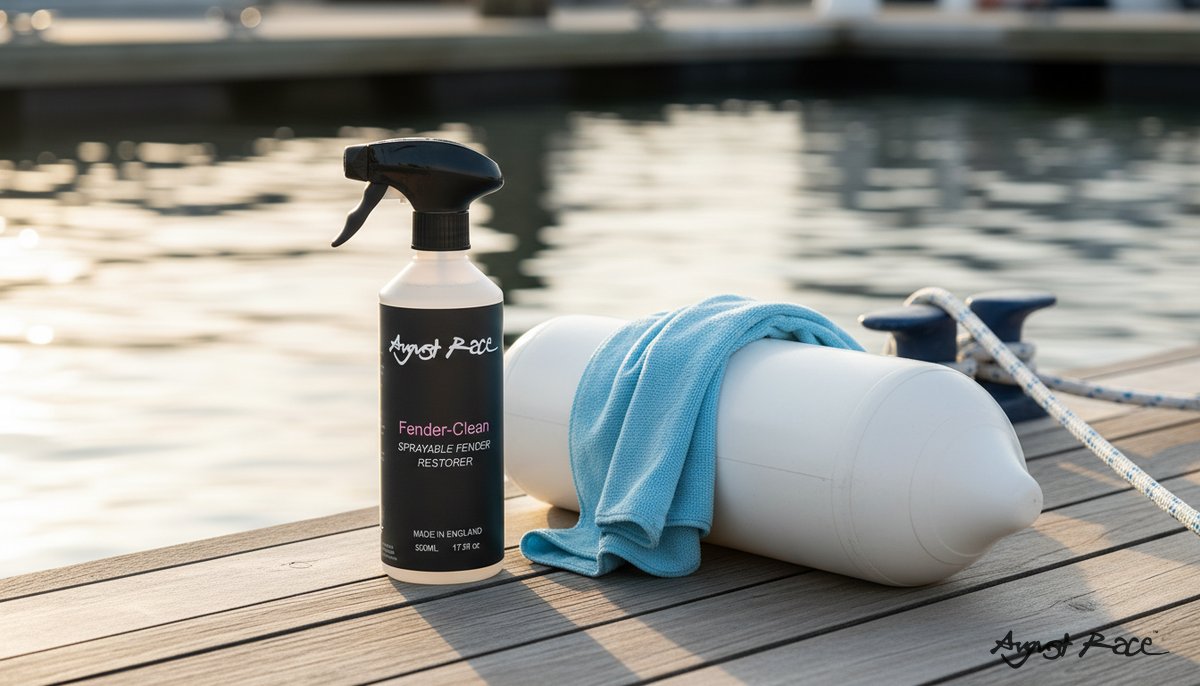
Remove Fender Grime & Pink Stains | August Race
Pro guide to removing pink tide stains from boat fenders, algae removal, and dockside buildup with August Race Fender Clean. Tips and seasonal care.
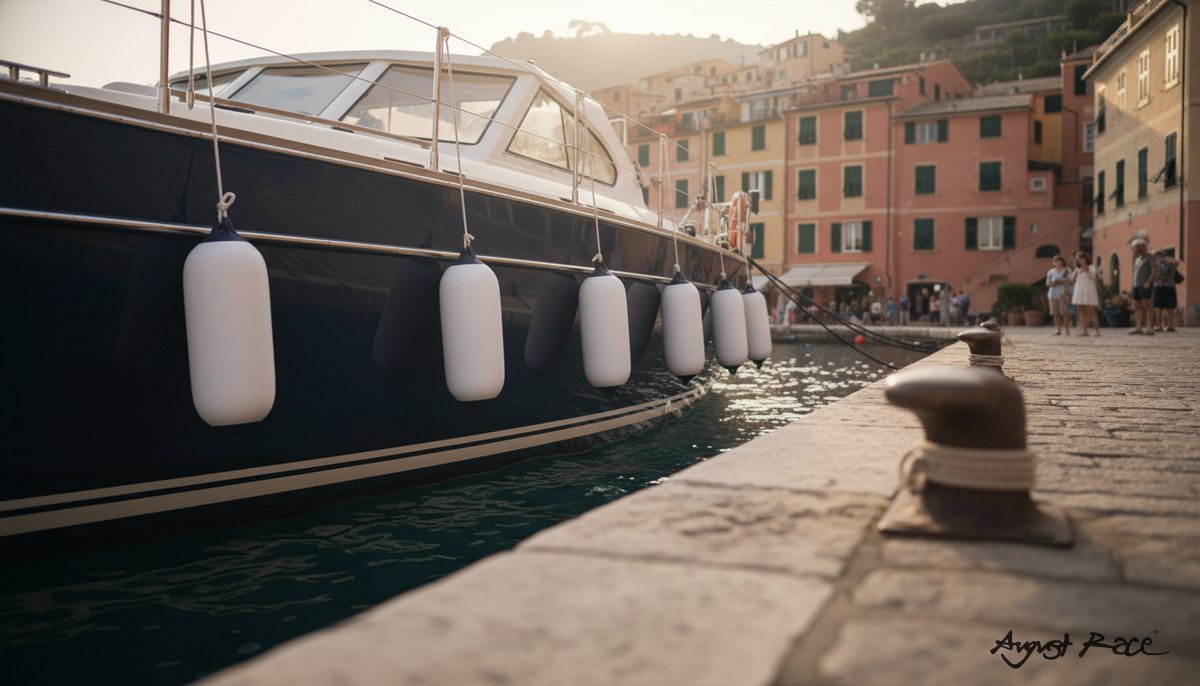
August Race Fender Clean: Eliminate Fender Grime
Discover how August Race Fender Clean removes fender grime, salt and black streaks while staying non-toxic and eco-safe for busy coastal marinas.
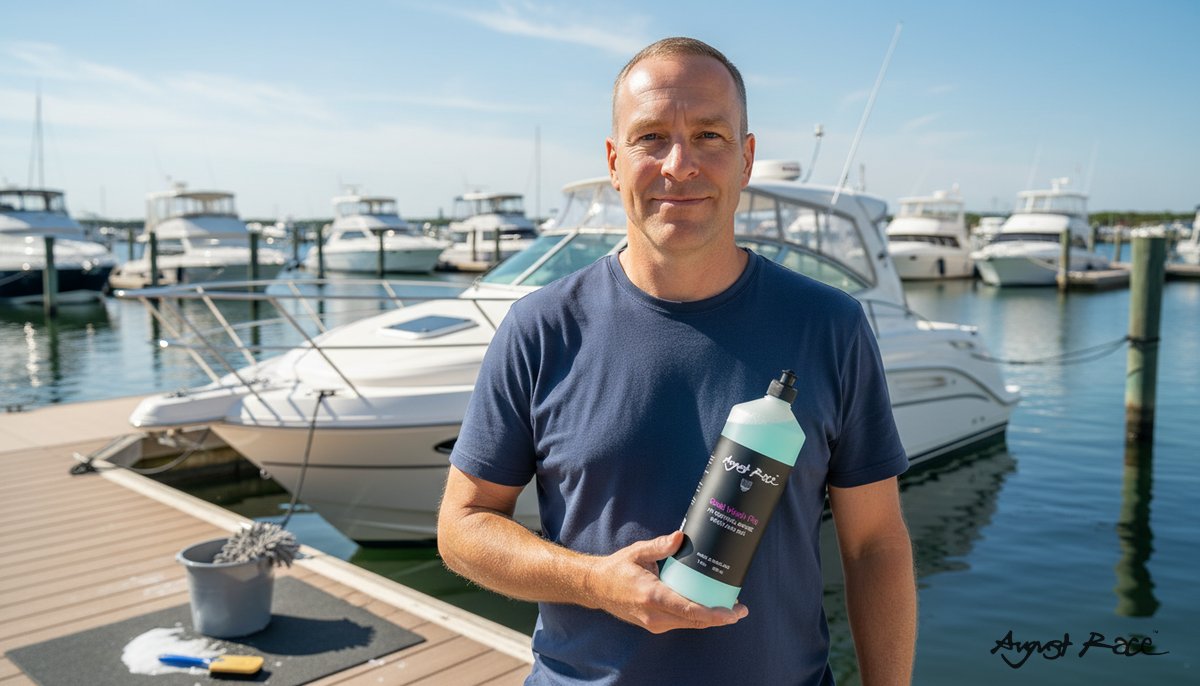
Salt Removal Boat Care with August Race Boat Wash Pro
Cut saltwater stains and gelcoat grime fast. pH-neutral, biodegradable wash for fleets, RIBs, and yachts -- save rinse cycles at your marina.
